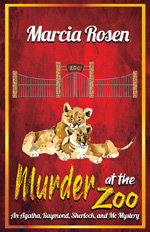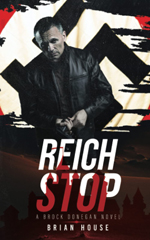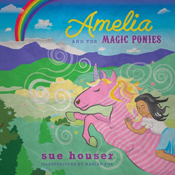Author Fil A. Chavez is a U.S. Air Force veteran and a retired management and consulting professional who became serious about writing after he won first place in a romantic essay contest. Unused Towels (2022) is a collection of honest, real-life stories from his business and personal life meant to encourage readers, especially those whose lives are impacted by suicidal depression. Look for Unused Towels on Amazon.
 Who are your ideal readers, and what do you hope they’ll take away from the book?
Who are your ideal readers, and what do you hope they’ll take away from the book?
The ideal reader for 19 of the 23 chapters is anyone who enjoys a very short story that is humorous, entertaining, and uplifting (there are over 75 very short stories in the book). For the other four chapters, the ideal reader is anyone dealing with suicidal thoughts or dealing with someone who may be suicidal. Also, anyone who has questions about why a loved one (who seemed to be happy) committed suicide. In addition, my main message includes those who may be more absorbed with the negatives rather than with the positives in their lives. For all readers, I hope they will take away a more supportive feeling for their loved ones, as well as have a better feeling about themselves.
Looking at the Table of Contents, it’s obvious Unused Towels is a different sort of story collection. Explain how the book is structured and why you use towels to tie it together.
All 23 chapters are standalones—they can be read in any order. Chapter titles include one of four designations: Bath Towel (very serious), Beach Towel (lighthearted), Hand Towel (serious but easy to handle), or Wash Cloth (series of quick reads).
“Unused towels” is a metaphor for assuring that we use all the talents the good Lord has loaned us while we are on this earth. The genesis of the words “unused towels” harkens to my lovely mother who saved the good towels, over two dozen of them, for company. After my mom died, we found several dozen unused towels in one of her closets, towels which I was not allowed to use when I visited. Were there an expiration date on those towels, they would fundamentally have served no purpose, ditto for talents which I might leave unused when I die.
Tell us more about the book.
As a counter-balance to the four chapters dealing with depression, I have added 19 entertaining, funny, uplifting chapters, including various lessons learned told in a humorous, encouraging way. The book is a result of years of writing notes about various experiences and thoughts in my life. The earliest note is marked with a date from 1983. The actual book took about 2 1/2 years to put together, with editing being an on-going process.
The last chapter deals specifically with the cycle of suicidal depression in a way I have not read or heard anywhere else; it is a result of personal experiences dealing with the very dark place where suicidal depression roosts. This final chapter, titled “TOSTI,” is a journey into a very lonely world without feelings, where love, help, and caring do not exist—even God is absent. TOSTI is my acronym for The Other Side of The Ice. I offer what I have learned to those struggling with how to understand why a loved took his/her life leaving no clues that they were suicidally depressed, as well as to those in the throes of suicidal depression, so that they know they are not alone and that God genuinely cares about them.
Do you have a favorite quote from Unused Towels that you’d like to share?
One quote on the lighter side: As I was standing in line to get coffee and a Danish, a stranger kept staring at me with a big smile on his face. When I got close to him—before I could ask him “Do I know you?”—he grinned even wider and said, “I don’t know if you care or not, but your fly is open.”
On the heavier side, two quotes: (1) General Mark and Carole Graham’s comments about their son, Kevin, who took his life. (See the last page of the book for their full comments at the 2022 Memorial Day Concert.) “We knew Kevin was sad, but we didn’t know one could die from being too sad. We know there are a lot of Kevins suffering in silence.” (2) The saying that “words matter” is not relevant when dealing with someone who is suicidal. This is one time when words do not matter. Only actions matter!
Any “Oh, wow!” moments while doing research for this book?
The research for the book was mostly digging into my notes and memories, resulting in lots of “Wows!” in my little head. In terms of statistics, a big “Wow” is how many people take their lives, especially veterans (more than 20 per day).
When did you know you had taken the manuscript as far as it could go, that it was finished and ready for publishing?
When my wonderful wife Mary finally said, “I’m exhausted. I can’t do this anymore.” Mary really ought to be listed as a co-author for her priceless editing assistance and for providing critical improvements to the words. Also, Rose Kern’s gentle push that a writer has to call a book “Done” at some point even though in my mind it wasn’t quite done. Mary, being what she describes as a “recovering perfectionist,” made me realize that a perfectionist is never really finished. There is always a way to improve whatever you’re doing, but sometimes you just have to say, “Done!”
What was your favorite part of putting this project together, and what did you struggle with most?
Without a doubt, my most favorite part was working with my wife Mary. Without her invaluable partnering on this, Unused Towels would not be a book. The truly biggest struggle was wondering if the book was worth publishing, or whether I should just write it off as merely a hobby.
What writing advice did you find most helpful while you worked on the book?
I was guided by Malcolm Gladwell’s advice that: (1) A writer who is concerned about always being right should not write; (2) I would rather be interesting than correct; and (3) A writer’s job is to be interesting, to raise questions that need raising, to get people to think through difficult subjects. I was also guided by the advice that “a book needs to be felt not just read.” With these pieces of sage advice in mind, I jumped into writing wherever my mind took me, gathering different stories from my life. Regarding the advice that “I would rather be interesting than correct,” Mary and I found our formatting easier and more inviting to read rather than following the dictums of the Chicago Manual of Style. Based on the comments received from some of my “ideal readers,” not following the Chicago Manual one hundred percent was not an issue!
During the writing process for Unused Towels, were you ever afraid you were revealing too much about yourself?
Interestingly, it was never an issue, although I did delete some things. Also, after reading an early draft which included two of my embarrassing blunders as a first-time manager, Mary described the book as “refreshingly honest.” That made me feel good about sharing some critical lessons learned. In terms of the references to my suicidal depression experiences, not at all. It is important to let anyone dealing with depression, especially suicidal depression, know in a very honest way that they are not alone. Based on the comments I have received from readers, that was effectively done. I also had this comment from a reader, “Fil, I am still too embarrassed to tell anyone what I am dealing with. Thank you for talking for me.”
What is the best compliment you’ve received as an author?
The best compliments have been the honest comments from readers who connected with the book. Here are a few comments:
“You may have saved some lives very close to you and not even realized it! I have just read of your pain, anguish, remorse and the range of emotions and events which lead you into the spiral of depression. I find myself mixed and moved with feelings and share the pain. I read your words and saw better what my dad must have been going through before he “transitioned.” I understand why he sounded so “up” during the last time we spoke over the phone. I want to learn more how to “hug” someone long distance. I want to know how a person who has lost their sense of “self-preservation” and rejects proffered “hugs” can be reached. … THIS IS A MESSAGE WORTH GETTING OUT.”
“Hey Fil! I just ordered 9 books to give to family and friends. … I have struggled with depression my entire life. Am just trying for the first time in decades to do it without pharma, so am feeling lots of feels that have been hiding out for a LONG time.”
What has writing taught you about yourself?
That what God has guided me to do in life was His desire, and I should let “Trust in God” control me.
Have you ever suffered from writer’s block? If so, how did you break through?
At times, every few weeks. The breakthroughs were varied, the good Lord always being there. For example, when I ran into a nurse, Stephanie, waiting in the Covid vaccination line who, after briefly talking about me writing a book, inspired me to continue writing the book with her encouraging words. The full story is on pages 37-39.
What writing projects are you working on now?
None in a serious way; Mary and I are exhausted. My focus right now is getting the book out to as many veterans and their families as I can.
Is there anything else you’d like readers to know?
Live in your successes! Let living in your successes control you; do not let living in your failures control you.
 KL Wagoner (writing as Cate Macabe) is the author of This New Mountain: a memoir of AJ Jackson, private investigator, repossessor, and grandmother. Kat has a speculative fiction blog at klwagoner.com and writes about memoir at ThisNewMountain.com.
KL Wagoner (writing as Cate Macabe) is the author of This New Mountain: a memoir of AJ Jackson, private investigator, repossessor, and grandmother. Kat has a speculative fiction blog at klwagoner.com and writes about memoir at ThisNewMountain.com.
 Please tell us about Murder at the Zoo.
Please tell us about Murder at the Zoo. Su Lierz writes dark fiction, short story fiction, and personal essays. Her short story “Twelve Days in April,” written under the pen name Laney Payne, appeared in the 2018 SouthWest Writers Sage Anthology. Su was a finalist in the 2017 and 2018 Albuquerque Museum Authors Festival Writing Contest. She lives in Corrales, New Mexico, with her husband Dennis.
Su Lierz writes dark fiction, short story fiction, and personal essays. Her short story “Twelve Days in April,” written under the pen name Laney Payne, appeared in the 2018 SouthWest Writers Sage Anthology. Su was a finalist in the 2017 and 2018 Albuquerque Museum Authors Festival Writing Contest. She lives in Corrales, New Mexico, with her husband Dennis.





 KL Wagoner (writing as Cate Macabe) is the author of This New Mountain: a memoir of AJ Jackson, private investigator, repossessor, and grandmother. Kat has a speculative fiction blog at
KL Wagoner (writing as Cate Macabe) is the author of This New Mountain: a memoir of AJ Jackson, private investigator, repossessor, and grandmother. Kat has a speculative fiction blog at 































